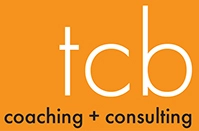
I learned to bake from my grandmothers. Grandma Grace cooked for nine younger siblings and honed her skills as a home economics major in college in the 1930s. Grandma Jean was a World War II era self-taught cook who honed her skills as a working single mother of two in the 1970s. They taught me the importance of following a recipe, and also gave me the confidence to customize recipes based on available ingredients and my own tastes and preferences.
Over time, I came to rely on Grandma Jean’s traditional apple pie recipe baked in Grandma Grace’s ceramic pie plate. Opinions on proper pie crust differ wildly. I use a butter crust that comes together with ice cold water and a handheld pastry mixing tool. A good recipe can yield reliable results, but it takes a flexible and creative cook choosing the right ingredients, techniques and tools to make something delicious.
Just as a recipe provides structure to guide successful pie making, we also need structure to guide us through a productive work day. I hear from clients who lack structure and work at break-neck speed on one deadline and crisis after another for weeks and months on end. Meanwhile their own priorities languish while waiting for a “lull” that never comes. They become exhausted from working too hard for too long but also can’t point to any long term goals or accomplishments served by their efforts.
On the other side of the same coin are clients who have less work to do, either due to a small incoming case pipeline or temporarily low workflow. These clients can also have trouble being productive. Without urgent deadlines, they don’t know what to do first or next. So they get distracted by e-mail, the internet or lower priority tasks until an emergency arises that dictates what must be done.
Both types of clients benefit from creating their own “Recipe for Success.” They define success on their own terms and develop infrastructure to guide their workday to make progress on important goals and projects. When clients work in this way, using “ingredients” and “utensils” that are well adapted to them (like a confident cook), they can get more done and feel less stressed. Here is how they do it and you can too:
Define success on your own terms. A recipe provides instructions for achieving a specific version of the dish being made. “Success” is defined by the tastes and desires of the recipe creator at least initially. Eventually we might feel confident enough to vary the recipe and define our own version of “perfect pie.” Similarly, it might be time to adapt other people’s recipes for success in work and life to better meet our own needs and desires. Increasing billable hours, never saying no and bigger case loads are not the only way to define and measure success, though some might think so. Coaching clients define success in terms of the work and life they want. Their goals may be wider in variety and also modest in scope by comparison the dominant culture’s rather narrowly defined but difficult to achieve version of success. Most clients want to work on interesting cases in their area of expertise, bring in enough revenue to meet firm overhead and personal income needs, and have time and energy for life outside of law practice. One client feels successful by using time efficiently Monday through Thursday and then going snow skiing on Fridays during winter. Another increases efficiency and profitability by improving systems and processes. Others want time for caretaking duties for children or other dependents while also having time to take care of themselves. Each of these scenarios are entirely valid versions of success and achieving them means everything to the people who hold them.
Develop infrastructure to guide your efforts. Productivity infrastructure is the scaffolding and tools we use to organize our time, focus our attention and design our approach to work. Productivity tools include our calendar, task lists, daily priorities and e-mail management strategies. Instead of saying yes to every opportunity, clients develop and apply filters (criteria) to determine which cases and projects fit with their productive capacity and practice goals. They say yes to these and decline or refer out the rest, leaving time and energy to pursue meaningful work and other life goals.
Clarify and enforce healthy boundaries. Lawyers need boundaries with clients and colleagues. And yet too often we let anyone give us nearly any kind of work. We might face burnout or assume there is something wrong with us if we can’t do it all. What’s wrong is a lack of boundaries. Boundaries help us manage ourselves and our work to meet the needs of all our clients and also leave some time and energy in reserve to address firm needs and our own personal needs. With coaching, clients learn to discern and respect their boundaries, and then to communicate their boundaries to others. Ideally, our boundaries will be respected but we can also explore mutually agreeable accommodations and other solutions.
Productivity coaching helps clients define a vision of the work and life they want, and then to adopt the structure, practices and routines to achieve it. It is both simple and hard just like baking an apple pie from scratch. And, it helps to have the guide of a trusted recipe and coach along the way.
I help clients Work Smarter and Live Better through Individual Coaching Engagements, Professional Development Services and Retreat Facilitation. Learn more by contacting me for a free 30 minute consultation: 503-734-7232 or heather@tcbcoaching.com
